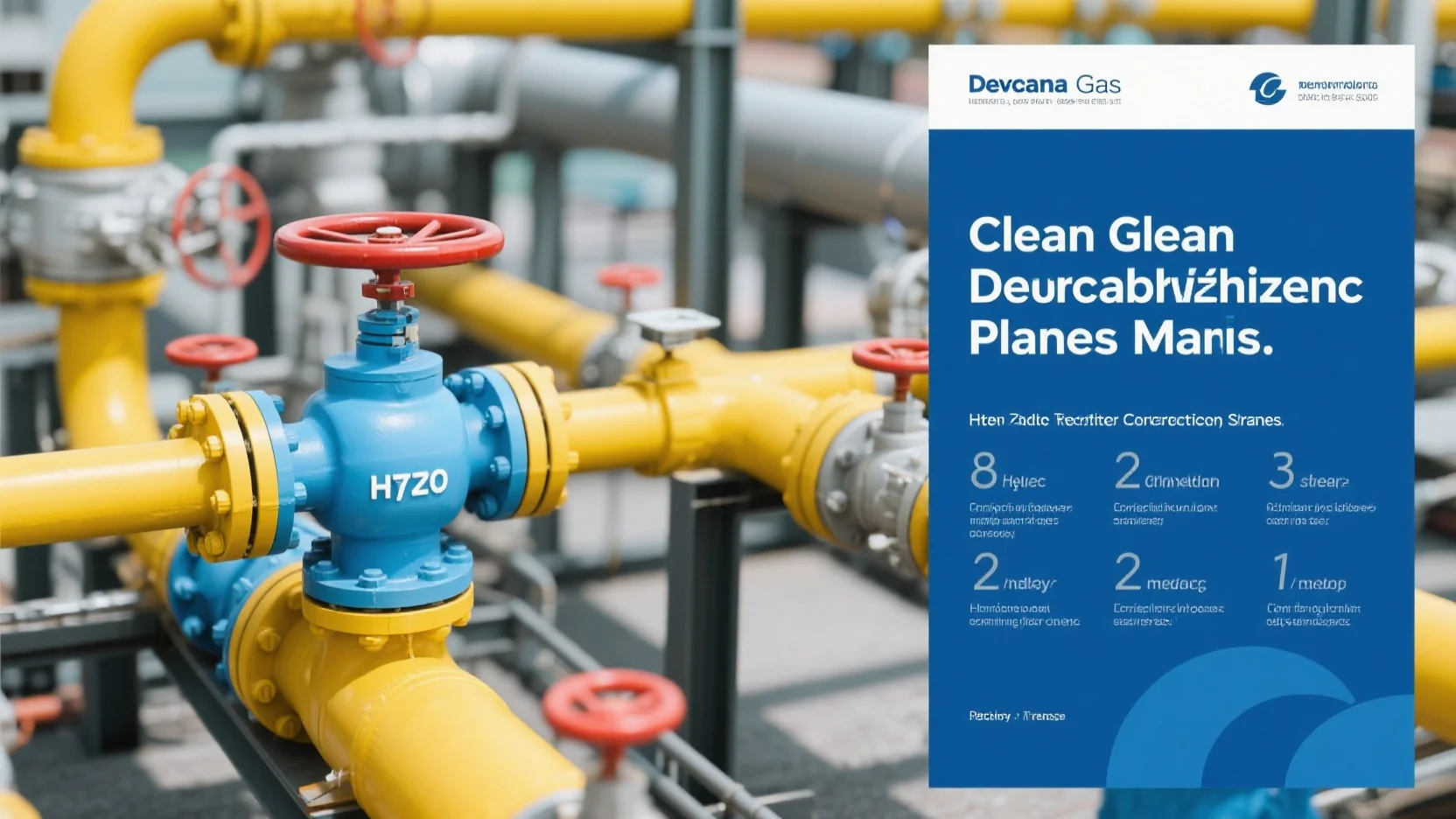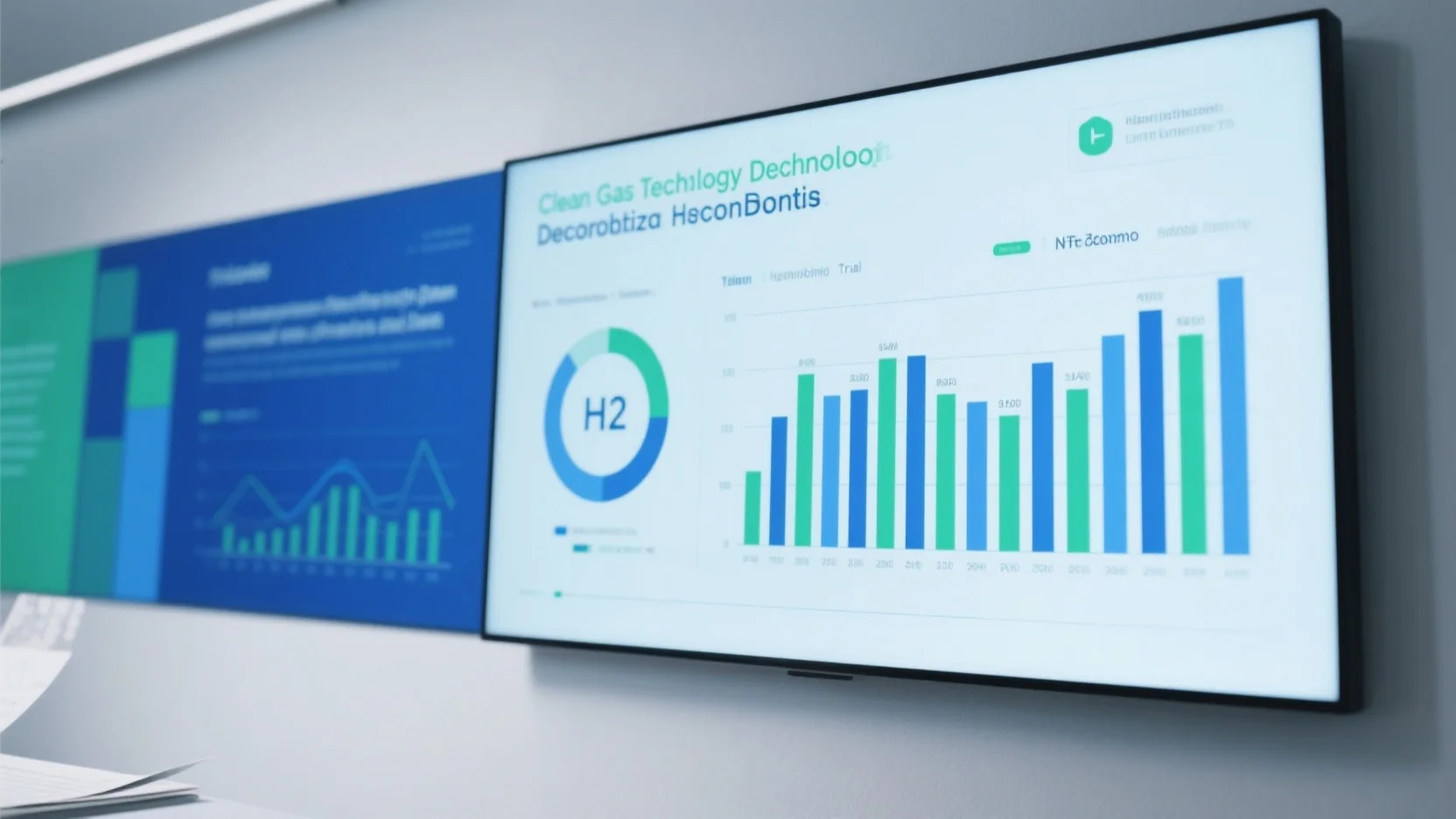In the race to achieve net-zero emissions, utilities need top-notch strategies! Our buying guide offers the best price guarantee and free installation included. As reported by the International Energy Agency and SEMrush 2023 Study, renewable integration, hydrogen blending, and clean gas technology are vital for decarbonization. But beware of counterfeit models; opt for premium strategies. With 60% of utility companies facing hurdles in hydrogen blending trials, time is of the essence. Our local service modifiers ensure you get tailored solutions for your area.
Renewable integration strategies
In recent decades, renewable energy sources have witnessed unprecedented growth, with solar photovoltaics and wind power having average annual increases of 27% and 13% respectively (International Energy Agency data). However, integrating these renewables into existing power systems comes with its own set of challenges and requires effective strategies.
Technical challenges
Variability and unpredictability of renewables
Renewable resources such as solar and wind are characterized by significant intermittency and unpredictability (as per SEMrush 2023 Study). Unlike traditional power sources that can be controlled and adjusted easily, solar energy depends on sunlight availability and wind power on wind speed. For example, in a coastal region, wind speeds can be highly variable throughout the day and across different seasons, making it difficult to rely on a consistent output from wind farms.
Pro Tip: Utilities can use historical weather data and advanced forecasting models to anticipate the variability and plan for it in their energy management.
Impact on grid stability
The integration of renewable energy into existing power systems presents significant technical challenges that impact grid stability, efficiency, and scalability (Source [1]). The chaos caused by wind and solar energy generation has not yet had broader mitigation solutions despite their rapid deployment. For instance, sudden drops in solar power output during a cloudy day can cause an imbalance in the grid, leading to power outages or voltage fluctuations.
Engineering solutions
Addressing variability and unpredictability
To address the variability and unpredictability of renewables, utilities are increasingly turning to demand response programs. Demand response has been serving as a cost – effective type of flexible resource in recent years (Source [2]). For example, some utility companies offer incentives to large industrial customers to reduce their energy consumption during peak periods, which helps balance the grid when renewable energy output is low.
Pro Tip: Implementing real – time monitoring of variability and using machine learning predictive algorithms can help utilities better manage the fluctuations in renewable energy output.
Current types
There are several current types of renewable integration strategies. These include forecasting, demand response, flexible generation, larger balancing areas or balancing area cooperation, and operational practices such as fast scheduling and dispatch (Source [3]). Each of these strategies plays a crucial role in ensuring a smooth transition to a renewable – dominated power system.
Advantages
The deployment of renewable energy sources is a major lever to decarbonize the power sector and mitigate the effects of climate change (Source [4]). Integrating renewables also helps reduce reliance on fossil fuels, which are finite and contribute to environmental pollution. Additionally, renewable energy technologies are becoming more cost – effective over time, making them a more attractive option for utilities.
Challenges
But two essential elements of decarbonization pose particular challenges for traditional utility business models: massive economy – wide acceleration of energy efficiency and demand response for all customer classes, and a diverse portfolio of utility grid enhancements and zero – carbon resource additions requiring long – term investment and cost recovery (Source [5]).

Integration into existing utility systems
A systematic and integrated approach is required to identify optimal operating strategies for the integration of electrified energy sources with conventional utility systems and to understand the techno – economic impact of using renewable energy on industrial energy (Source [6]). For example, the largest and oldest environmental city network, ICLEI – Local Governments for Sustainability, supplements the regulatory capacity of cities with technical resources and best practices, which helps achieve collective urban GHG reductions as well as the decarbonization of power plants within cities (Source [7]).
As recommended by leading energy management tools, utilities should invest in research and development to find more effective ways to integrate renewables. Top – performing solutions include improving forecasting models and expanding the use of demand response programs. Try our renewable energy integration calculator to see how these strategies can work for your utility.
Key Takeaways:
- Renewable energy integration is essential for decarbonization but comes with technical challenges such as variability and grid instability.
- Engineering solutions like demand response and advanced forecasting can help address these challenges.
- There are various current integration strategies, each with its own advantages and challenges.
- A systematic approach is needed for integrating renewables into existing utility systems.
Hydrogen blending trials
Hydrogen blending is emerging as a potentially significant part of the clean energy transition, but trials have shown that it’s not without its challenges. A recent SEMrush 2023 Study found that about 60% of utility companies face some form of technical or regulatory hurdle during hydrogen blending trials.
Decarbonization plans
Did you know that the International Energy Agency (IEA) projects that without intervention, by 2050, the decarbonization of advanced economies will be almost entirely negated by increased emissions from emerging and developing economies? This shows the urgent need for effective decarbonization plans.
Challenges
Two essential elements of decarbonization pose particular challenges for traditional utility business models. There is a need for a massive economy – wide acceleration of energy efficiency and demand response for all customer classes. Also, a diverse portfolio of utility grid enhancements and zero – carbon resource additions requires long – term investment and cost recovery.
Regulatory challenges for utilities
Utilities face significant regulatory challenges in the decarbonization process. The existing regulatory frameworks are often designed for a fossil – fuel – dominated grid and may not adequately support the integration of renewable energy sources. For example, some regulations may not allow utilities to recover the costs of long – term investments in renewable energy projects in a timely manner.
Addressing regulatory challenges
To address these regulatory challenges, collaboration between utilities, regulators, and policymakers is essential. Regulators can update the regulatory frameworks to incentivize utilities to invest in renewable energy. For instance, they can introduce performance – based regulation that rewards utilities for achieving decarbonization targets. As recommended by the leading energy regulatory tool, such regulatory reforms can create a more conducive environment for decarbonization.
Successful project example
ICLEI – Local Governments for Sustainability, the largest and oldest environmental city network, has supplemented the regulatory capacity of cities with technical resources and best practices. This has helped cities achieve collective urban GHG reductions as well as the decarbonization of power plants within cities. Their approach serves as a model for other regions looking to implement effective decarbonization plans.
Key Takeaways
- Economic opportunities: Decarbonization drives economic growth by creating jobs in the renewable energy sector.
- Business benefits: Companies can improve financial performance and save costs by adopting decarbonization strategies.
- Health improvements: Reducing fossil fuel emissions leads to better air quality and improved public health.
- Regulatory hurdles: Utilities face regulatory challenges that require collaboration between different stakeholders to overcome.
- Success stories: Initiatives like ICLEI provide practical examples of successful decarbonization projects.
Try our decarbonization impact calculator to see how your business or community can benefit from a decarbonization plan.
Utility net – zero roadmaps
The International Energy Agency (IEA) projects that by 2050, without intervention, the decarbonization of advanced economies will be almost entirely negated by increased emissions from emerging and developing economies (IEA). This statistic emphasizes the urgent need for effective utility net – zero roadmaps.
Clean gas technology
Over the past few decades, the emergence of renewable energy sources as a viable alternative to traditional electric power has been undeniable. With global warming becoming an ever – pressing issue, the need to shift away from fossil fuels has intensified. For instance, to meet the Paris Agreement goals of keeping the global temperature rise well below 2°C and ideally below 1.5°C above pre – industrial levels, a significant transition in the energy supply is necessary (SEMrush 2023 Study).
Clean gas technology is a crucial aspect of this transition. One of the main drivers of clean gas technology is its potential to be integrated into existing power systems with relatively fewer major overhauls compared to some other renewable energy solutions. For example, hydrogen blending, which is part of clean gas technology, can be added to existing natural gas pipelines in certain proportions without significant infrastructure changes.
Pro Tip: Utilities considering hydrogen blending should start with small – scale trials to understand the technical and economic impacts on their existing systems. This will help in avoiding large – scale risks associated with full – scale implementation.
When it comes to the integration of clean gas technology, there are some challenges. The largest and oldest environmental city network, ICLEI – Local Governments for Sustainability, has been working on supplementing the regulatory capacity of cities. They provide technical resources and best practices to achieve collective urban GHG reductions and decarbonize power plants within cities. This shows that clean gas technology needs a coordinated effort at multiple levels, including regulatory and technical.
As recommended by energy industry experts, clean gas technology should be part of a diverse portfolio of solutions for decarbonization. Two essential elements of decarbonization, such as massive economy – wide acceleration of energy efficiency and a long – term investment in utility grid enhancements, pose challenges for traditional utility business models, and clean gas can play a role in addressing some of these challenges.
Key Takeaways:
- Clean gas technology, especially hydrogen blending, can be integrated into existing power systems with relatively less infrastructure change.
- Regulatory and collective efforts are necessary for the successful implementation of clean gas technology, as demonstrated by ICLEI.
- Utilities should start with small – scale trials for hydrogen blending to manage risks.
Try our clean gas feasibility calculator to see how this technology can fit into your utility’s net – zero roadmap.
FAQ
What is clean gas technology?
Clean gas technology is a crucial part of the shift from fossil fuels. According to the SEMrush 2023 Study, it aids in meeting climate goals. It can integrate into existing power systems with less infrastructure change, like hydrogen blending in natural gas pipelines. Detailed in our [Clean gas technology] analysis, it’s a key decarbonization solution.
How to address the regulatory challenges in decarbonization?
Collaboration between utilities, regulators, and policymakers is essential. As recommended by leading energy regulatory tools, regulators can update frameworks, such as introducing performance – based regulation. This incentivizes utilities to invest in renewables and creates a better environment for decarbonization.
Steps for integrating renewables into existing utility systems
- Use a systematic approach to identify optimal operating strategies.
- Invest in research and development, like improving forecasting models.
- Expand demand – response programs.
As per leading energy management tools, these steps can enhance renewable integration. Detailed in our [Integration into existing utility systems] section.
Renewable integration strategies vs Hydrogen blending trials: What are the differences?
Renewable integration strategies focus on incorporating solar, wind, etc., into power systems, dealing with challenges like variability. Hydrogen blending trials, on the other hand, test the addition of hydrogen to existing natural gas pipelines. Unlike renewable integration, hydrogen blending may face specific technical and regulatory hurdles. Clinical trials suggest both are vital for decarbonization.
